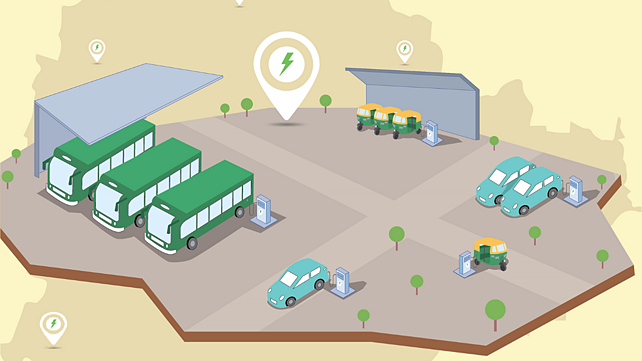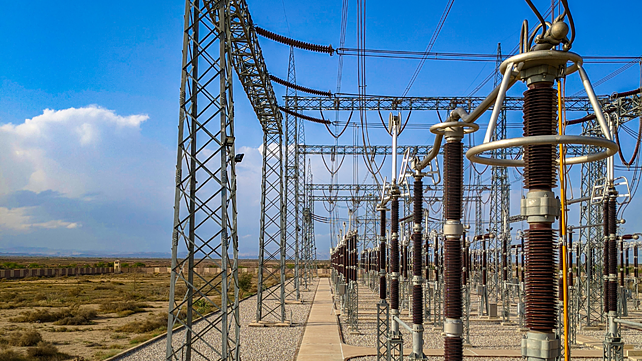
The year 2019-20 saw a ~20% spike in electric vehicles (EV) sales in India, as per the Society of Manufacturers of Electric Vehicles (SMEV). Transport aggregators such as Olaand e-commerce giants such as Amazon and Flipkart are planning to ramp up the number of EVs in their fleet. This indicates the willingness of people to switch to EVs for a good cause – namely, improved air quality.
Yet, the EV adoption rate in India is still not significant, with the total sale of EVs being only about 1% of total vehicle sales in India. This is primarily due to the absence of public charging infrastructure for the passenger segment and the high upfront cost, battery range, etc.
Though the utilisation of public chargers is low worldwide, given the easy availability and convenience of home charging, globally, studies have inferred that public charging stations provide a greater sense of security and psychologicalcomfort to EV users, and encourage more people to switch to EVs.
For instance, the Bengaluru Electricity Supply Company (BESCOM) installed 136 public charging stations in the city in 2019-20, but the utilisation rate stands low at 1%. This is partly because of the availability of home charging, but largely due to the siting of these public charging stations. The BESCOM charging stations are invariably located inside government office premises, often inaccessible to EV users or unknown to them.
It, therefore, becomes important to consider certain parameters prior to setting up public charging stations. Studies have been conducted around the world to understand the influencing parameters and choices behind potential locations for public charging stations. Parameters commonly considered are vehicle ownership, major activity centres, land use, travel behaviour, and travel pattern within a city. In the Indian context, demand, land availability, grid infrastructure, and public awareness are most relevant.
- Demand – The demand for charging stations is dependent on the resident population of an area; use of intermediate public transport (IPT) such as cabs, auto rickshaws, and e-bikes for last mile by a floating population; existence of major transport nodes such as metro, railway, bus terminus or station; activity centres such as offices, malls, hospitals, and institutes that attract the public during daytime; and commercial hubs. In residential areas, home charging would be available for most private vehicles, but in commercial areas, even private vehicles are likely to require a top-up charge at times.
- Land – This is an expensive asset requirement for setting up EV charging stations. Land cost could make a project financially unviable. A good option is to consider land available in parking lots – be they government-owned, institution-owned, commercial establishments, auto rickshaw stands, bus depots, railways stations, and so on. This will not only bring down the land cost, but also meet the charging needs of EVs using the parking spaces.
- Grid infrastructure – Once the land is identified, it is important to assess the electricity supply infrastructure (grid infrastructure) in the area. Identifying the nearest existing substation, checking on the existing load, and getting a detailed understanding of how much of the current and future electric vehicle charging demand it can sustain is essential. Not all substations would be running at full capacity throughout the day. Stations that have a low utilisation rate could be used to provide power to the charging stations. Though the availability of a grid is not an issue in the city and along the highways, drawing a new connection for a public charging station for four-wheelers is advisable given its high-energy requirement.
- Public awareness – Last, but not the least, there is a need to build public awareness on the location of the charging stations. This could be achieved through banners in strategic locations, advertisements on buses, media advertisements, tie-ups with EV dealers, etc.

Data needs
Identification of suitable locations for public charging stations is possible by taking into consideration the above parameters only if the following data is available:
Demand – For estimating demand, travel data is very essential. This includes data from cab aggregators such as Ola and Uber and data on auto rickshaw travel patterns, including origin, destination, halt locations, halt time feeds that will help understand where and when vehicles may require charging, considering the most probable and shortest routes. This is because vehicle owners/users are seldom willing to take long detours for charging.
Land availability – Estimation of land availability is possible through use of city maps (Google Map, master plans, city development plans) and GIS tools. These play a vital role in identifying vacant land parcels in high demand areas and their availability for setting up charging stations.
Grid infrastructure – Data from electric utilities on existing substations, load, and available capacity versus requirement needs to be marked. Where the substation capacity is utilised, an alternative substation needs to be identified. Also, future demand will have to be factored in.
In conclusion
In the Indian scenario, data availability and willingness of authorities to put up charging infrastructure is evident; however, in order to streamline the process and institutionalise the setting up of public EV charging stations, a data-intensive, integrated planning process needs to be set in motion. In addition, viable business models to facilitate the setting up of public charging stations are needed.
About the Author: Trupti Deshpande works in the area of urban transport and planning at the Center for Study of Science, Technology and Policy (CSTEP), a research-based think tank.